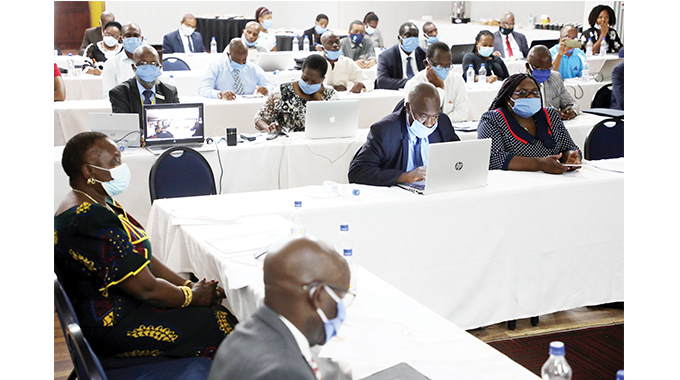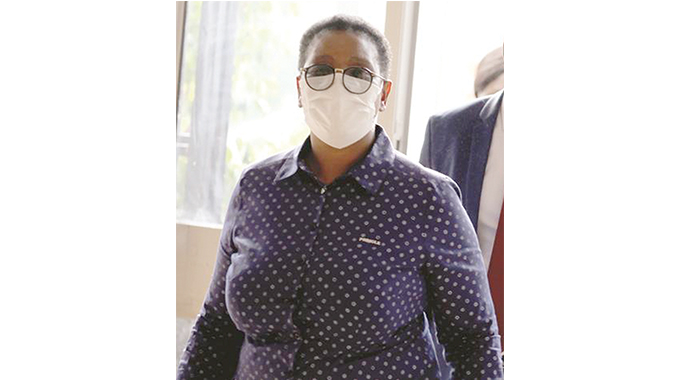University reforms bear fruit

Mkhululi Ncube, Chronicle Reporter
THE Second Republic has transformed institutions of higher learning in the country into innovative producers of practical solutions to society’s problems.
Higher and Tertiary Education, Innovation, Science and Technology Development Minister Professor Amon Murwira said this yesterday adding that the institutions boast of various achievements to show.
The ministry is crafting its second strategic document which will dovetail with the National Development Strategy (2021-2025) 1 to be launched next month by Government as well as the Second Republic’s Vision 2030 .
Ministry officials who include college and university principals and vice chancellors are attending a three-day strategic crafting workshop at a Bulawayo hotel.
Addressing the officials, Prof Murwira said the coming in of the new dispensation has transformed how universities and colleges conduct business under the Education 5.0.
“Results of our new focus on education, innovation, science and technology focus are beginning to show. We have now formed the Zimbabwe National Geospatial and Space Agency, whose results include the new Zimbabwe Agroecological Zones map and will aid agricultural planning.
“We have also revamped and improved the Management Training Bureau (MTB) to the status of high level training institute,” he said.
Prof Murwira said the Government has also expanded the mandate of four primary teacher training institutes — Mkoba, Joshua Mqabuko Nkomo, Masvingo and Mary Mount — to include secondary science, technology, engineering and mathematics (STEM) teacher training since 2018.
He said a number of local universities have successfully built innovation hubs while industrial parks are under construction.
“We have built and completed innovation hubs at Universty of Zimbabwe, National University of Science and Technology (Nust), Midlands State University (MSU), Chinhoyi University of Technology (CUT) and Harare Institute of Technology (HIT). We are in the process of building and completing more innovation hubs at Zimbabwe National Defence University (ZNDU), Bindura University of Sceince and Technology (BUSE), Great Zimbabwe University (GZU). We are building industrial parks at UZ, MSU and CUT. At CUT we have now the capacity for producing and packaging bull semen for artificial insemination with potential annual revenue of US$140 million.
“We also started a dairy project in May 2020 at CUT beginning with 65 dairy cows and 50 calves,” said the Minister.
Other projects under the stewardship of his ministry include the tissue culture which will produce 120 tonnes per hectare of potatoes by the National Biotechnology Authority, the oxygen/nitrogen and acetylene plants in Mutare as well as the setting up of a marula processing factory in Rutenga, Masvingo with construction work underway.
Prof Murwira said the response to Covid-19 by institutions of higher learning was another telling sign of progress made.
“The most glaring evidence of our progress in implementing innovation, science and technology development within the framework of Education 5.0 is the reaction of our higher and tertiary institutions to the Covid-19 pandemic.
“Government tasked them to move in with production of PPE (personal protective equipment). BUSE, NUST, CUT, MSU, GZU, HIT, UZ and associated colleges successfully came to the national defence against Covid-19,” he said.
Prof Murwira said part of measures by the ministry to further cement gains made include the overhaul of legal frameworks that touch his ministry. “We are streamlining the Universities Acts and the Manpower and Development Act,” he said. “Notable proposed changes in the Manpower Planning and Development Bill gazetted on the 14th of August 2020 are the academic and operational autonomy that is now enshrined for colleges and polytechnics similar to that in universities as well as the requirement for innovation and industrial spaces.
“It also gives effect to the Zimbabwe Academy of Sciences. We also had the Centre for Education, Innovation Research and Development Bill gazetted on the 16th of October 2020.”
Prof Murwira challenged officials to come up with a strategic plan for the ministry that will include key projects from offices of Ministers of State for Provincial Affairs and Devolution. — @themkhust









Comments